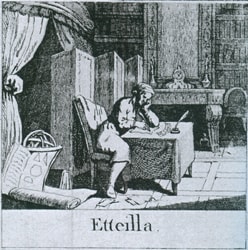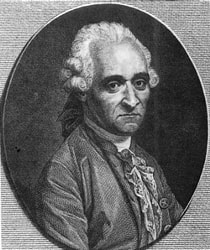easy tarot lessons
ADVANCED METAPHYSICAL LESSONS WITHOUT THE USUAL BULLSHIT
HOW DID TAROT CARDS GET THEIR MEANINGS?
Why do tarot cards mean what they do?
Any book on the tarot will give you "traditional tarot card meanings." Every author has their own opinion on what each card "should mean." But most authors simply copy tarot card meanings from what someone else wrote. Whether that was from a hundred years ago, or something they found online, or in a book they read. But why?
Tarot card meanings are by nature "traditional"
It's time for a bit of tarot history to truly understand why cards mean what they mean today.
"If I may begin at the beginning . . ."
The tarot was invented around 1438 in Northern Italy as a game. It was not until just after 1781 that the world's first tarot card reader (Etteilla) gained fame for reading cards professionally. That was about 350 years of tarot without tarot spreads, fortune telling, or "tarot card meanings." Amazingly, no one ever thought of using tarot cards for divination. Ultimately, Etteilla is the man responsible for the meanings of tarot cards we use to this day.
Etteilla was wildly popular (with the ladies), but let's not hold that against him. Etteilla created his own tarot deck, borrowing his images from the Marseilles Tarot. Those card printers got their images from the original Italian decks. In other words, from the very beginning, people were copying each other.

Etteilla (Jean-Baptiste Alliette)
We get all of our modern tarot card meanings from Etteilla?
So it stands that Etteilla became "the source" of tarot card meanings. And as history progressed, and artists redrew the tarot. They made tiny changes here and there—just like different artists draw comic book superheroes differently. So it went that various artists drew slightly different versions of the same theme. But along the way they added their psychic bias (their belief in reality) to the pictures they drew.
Because Etteilla was so popular, his card interpretations were de rigueur for anyone who wanted to be seen as a skilled tarot reader. But these were *his* ideas of what the cards should mean. He based is ideas on the suppositions of his colleague (and sometimes nemesis) Court de Gébelin, and much older texts. The Three Books Concerning Occult Philosophy, by Agrippa was a prime source naturally. (Heinrich Cornelius Agrippa, by the way—not Marcus Vipsanius Agrippa, a god among Romans, second only to Julius and Augustus).

Antoine "Court de Gébelin"
The Tarot has a history of "ethical plagiarism"?
Over time, tarot scholars like Éliphas Lévi, Waite, and Papus expanded on Etteilla's work by adding their own touches. But mostly they just copied down what others wrote before them. Occasionally they would a few things here and there to reflect their psychic bias. But it wasn't a big deal at the time—as "everyone was doing it." Keep in mind, this was long before mass publication of occult books was a thing. As big of names as these tarot giants were, their works were extremely limited in distribution in comparison to other authors of "more mainstream interest" subjects. Thus, they were members of an exclusive—and very cool—club.
And so it comes to us that the "traditional tarot meanings" are just that: A long history of metaphysical scholars and pseudo-scholars handing down their views on what each image meant. Some argued that the tarot was Kabbalistic in nature, while others used it for fortune telling. Tarot was more exotic (looking) than divination with regular playing cards ("how droll and commonplace"). So it became a popular addition to many of the mystery schools and secret societies of the 18th and 19th centuries. Happily, that tradition of course carries on to this day.
And that brings us to today, thanks to . . .
Almost every tarot deck, and every tarot book owes its existence to Etteilla, by way of Arthur Waite's (King of the tarot, not of England—although he was a British citizen) vision of the cards. Hiring Pixie Smith (aka Pam) to do the line work for his grand vision—and for not enough money, I say!—Art (he lets me call him that at the pub), he created the most popular tarot deck in the new world (America), even though his decks hardly reached the shores (stupid nazis!).
That part was up to the rouge of the modern tarot, famous and infamous, genius and "Yankee Pirate!" to some (and aren't we all?). L.W. de Laurence created the first "American" Tarot deck by ingeniously (um . . . what's a polite word for "lifting") Art's book and deck images, and publishing them as his own. Well, these things were hot, hot, hot! Say what you will about the master of hypnosis—and mail order—L.W. sold a LOT of tarot decks. L.W. is single-handedly responsible for the tarot craze in America that led to the 1959 publication of the first color tarot deck by University Books.
University Books (a small publisher of occult materials) published Waite's The Pictorial Key to the Tarot. They popularized the tarot in America by creating inexpensive, brightly colored tarot cards. Not only that, they offered The Pictorial Key to the Tarot for just five bucks! Building on L.W.'s legacy, they completed they cemented Waite's interpretation of the tarot card meanings. From their works came Eden Gray and other authors. Some authors just reprinted or paraphrasing the original books. Others followed Paul Foster Case's need to infuse the tarot with select tidbits of the Kabbalah. But mostly everyone agreed on the general meanings set down by Etteilla and Waite.
So this is how tarot cards got their meanings?
In short—yes. What started out as a game in Italy became a hugely popular game in France, over several centuries. At some point it had to happen. Someone got the crazy idea to use cards for divination, and they were an instant hit. When tarot cards hit the U.S. shores, they were popularized first by de Laurence and then, in pop-culture, by University Books. Later companies, like Tarot Productions (Frankie Albano), U.S. Games (now U.S.G.S.), and Lo Scarabeo would create many variations of the same artwork. But they never really changed the essential meanings.
What a tarot card means is what it means to you, right now. In the spread you cast, for yourself or a client, not some generic meaning someone wrote down in a book.. The "traditional meanings" are simply guidelines, or broad generic areas of interpretations. This is the fundamental fact too many tarot readers miss. Card meanings from a book are not meant to be memorized. At least if you ever want to derive accurate, specific, and useful information from your cards.
To give good readings, and even more important: great readings, you have to know what the cards "basically say." But you have to be able to translate that into specifics that apply directly to the situation you are inquiring about.
This comes from a good education, and lots of practice. The better your tarot education, the less years of practice it takes to figure this out. And you will read circles around any tarot reader you meet. This is not conjecture or supposition. Thousands of the top tarot readers in the world prove this fact every day—and that is really good news for you.
—Dusty

